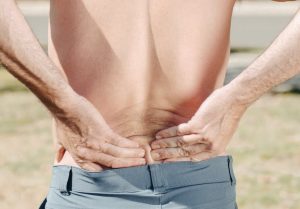The Problem’s Overview

The concept of spine stability, as well as low back stabilisation exercises, has become a prominent emphasis in both rehabilitation and preventive care. The term “stabilisation exercise” is a catch-all term for any exercise that tests the stability of the spine while teaching muscle activity patterns and spine posture to achieve “sufficient stability” (McGill S. 2002). Sufficient stability is defined as ensuring stability without imposing excessive pressures on the supporting tissues (Cholewicki J., McGill SM. 1996).
Approaches to spine stabilisation that are effective must begin with a strong knowledge of what stability is. It has little to do with the capacity to balance on a gym ball from the standpoint of the spine. True spine stability requires “balanced” stiffness of the entire muscle, including the rectus abdominis and abdominal wall, quadratus lumborum, latissimus dorsi, and back extensors of longissimus, ilioicostalis, and multifidus. Concentrating on a single muscle does not improve stability; instead, it develops patterns that, when quantified, result in decreased stability. It’s impossible to exercise muscles like the transverse abdominis or multifidus in isolation because people can’t just stimulate these muscles.
Motion and motor pattern deficiencies have been identified as more significant and should thus be therapeutic exercise targets. Hodges and Richardson (Hodges PW, Richardson CA. 1998, 1999) have shown that having a history of low back pain can result in incorrect motor habits. Additionally, these disrupted motor patterns have been associated with unstable events and eventual reinjury (McGill S. 2002; Ching RP et al. 1992). As a result, instability can cause back diseases as well as result from disorders and associated tissue damage. Also, many patients with back pain have stronger backs but are less tolerant than asymptomatic controls (McGill et al., 2003). They have more motion and load in their backs but less motion and load in their hips. “Gluteal amnesia” (McGill, 2007) is a typical aberrant motor pattern that may be both a result of and a cause of back problems. Obviously, activities that improve gluteal muscle integration will benefit this client’s backs as well as their knees. The identification of these individuals with disrupted patterns, followed by particular corrective exercise—this comes before any other exercise treatment—leads to optimal back exercise therapy.
How to train the Lumbar Spine Stability ?

Clinically, the topic of how to train lumbar spine stability necessitates an understanding of how the various muscles contribute to stability. The argument over which muscles are crucial stabilisers and how to educate the neuromuscular control system to guarantee adequate stability continues. While many people feel that “local” muscles are important for spine stability, others believe that “global,” broader muscles have a role.
Panjabi et al. (1989) proposed that the importance of global muscles in lumbar spine stabilisation stems from their efficient ability to influence the stiffness of the entire spinal column, as opposed to local muscles, which can only act on a few joints.
According to the results of their biomechanical analyses, Cholewicki and McGill (1996) and Cholewicki and Van Vliet (2002) conclude that no single muscle, local or global, possesses a dominant responsibility for lumbar spine stability and that training efforts should not focus on any single muscle. Clearly, no particular muscle is superior in terms of improving spine stability. Muscles in the trunk play multiple tasks at the same time, and their responsibilities are determined by the immediate demand exerted on the spinal column. In general, the muscles that were antagonistic to the task’s dominating moment were the most successful at increasing stability. When muscles that counter the major destabilising forces were deactivated, the biggest losses in stability were found.
Cholewicki and McGill (1992) noticed transitory increased spinal flexion in a powerlifter who had an injury while lifting during an in vivo study. The authors hypothesised that the increased flexion instability was caused by a motor control mistake in a critical back muscle. These transient reductions may prohibit those muscles, whose job it is to oppose critical destabilising forces and rotational instabilities during a certain task, from controlling vertebral motion. As the destabilising pressures on the spine change with posture, so do the muscles that can counter these forces.
In a thorough biomechanical analysis, Kavcic N. et al. (2004) showed that no single muscle dominated the increase in spine stability, and their individual functions were constantly shifting between tasks. Clinically, if the goal is to train for stability, it is justified to improve motor patterns that involve numerous muscles rather than just a few.
Which exercises are sufficient?
N. Kavcic et al. (2004) compared the quantitative biomechanical properties of seven different lumbar spine “stabilisation exercises.” They argue that quantifying calibrated muscle activation levels in conjunction with low back compression and resulting stability aids healthcare decisions about the most effective training for certain patients and objectives. Various studies have supported the McGill Big 3 stabilisation exercises, as basic aspects of these exercises have already been examined for stability and spine strain (Kavcic N, et al. 2004a,b).
1] Curl-Up:

Very little action is used in this curl-up form to preserve the discs from damage or pain exacerbation. A progression in abdominal difficulty began with a curl that raised the head, neck, and shoulders slightly while keeping the elbows on the mat. Raising the elbows off the mat was the next step in the sequence.
2] Side-Bridge:

The side-bridge performed from the knees generated the lowest torso muscle challenge, indicating a clear progression. Supporting the sidebridge with the feet increased activation in all muscles, making the exercise more difficult. The most difficult part was rolling into a plank, halting, then proceeding to the other side for a bridge.
3] Birddog:

The challenge appears to evolve as follows, based on muscle activity: simply arm elevation, just leg elevation, both arm and leg (full birddog), then the inclusion of a conscious abdominal bracing, and lastly an intentional mild abduction of the shoulder with greater elevation. When in full birddog posture, draw squares with your hand and foot to make it a more difficult workout. Take note that all mobility occurs around the shoulder and hip.
Variations of the ”Big 3” stabilisation exercises (modified curlup, side bridge, and quadruped birddog) have been quantified and chosen for their ability to ensure adequate spine stability and optimal motor patterns; they protect the spine from many injury mechanisms and pain exacerbators and are intended to build muscle endurance.
Finally, do not use abdominal hollowing interventions with your back pain patients because it reduces the column’s potential energy, allowing it to fail at lower applied loads (McGill, 2009). A recent clinical trial (Koumantakis et al., 2005) compared the efficacy of many of the exercises quantified and published in Physical Therapy (McGill, 1998) with the same exercises paired with specific transverse abdominis isolation (hollowing, for example). The addition of particular transverse abdominis exercises decreased efficacy! The abdominal brace, on the other hand, improves stability by contracting all abdominal muscles.
Core Exercise as a PROGRAMME for Injury Prevention
Core stability training has been found to be useful in avoiding and healing shoulder and knee injuries (Kibler WB, et al., 2006; Hewett TE, et al., 2005; Myer GD, et al., 2004). Many occupational and sporting groups have employed the exercises that comprise the ”Big 3” mentioned in the previous section as part of an injury prevention programme.
Durall et al. (Durall CJ et al. 2009) demonstrated in a population of competitive collegiate gymnasts that training the flexors, lateral musculature, and extensors of the core with the Big 3 in the preseason for 10 weeks prevented any new back pain incidents and controlled pain in those with a history of pain. Similar workouts have been proven to help female intercollegiate basketball players avoid knee injuries (Hewett TE, et al. 2005).
THERAPEUTIC/CORRECTIVE EXERCISE CAUTIONS
- isometric exercises under 10 seconds in duration and improve endurance through repetitions rather than increasing hold time. This was the only technique to increase endurance without the muscles cramping from lack of oxygen and acid accumulation (McGill SM, et al. 2000).
- Maintain perfect form to maximise available strength and keep the spine in its strongest (most bearable) position. In general, excellent form entails attempting to eliminate spine postural abnormalities that aggravate pain or allowing more difficult forms of exercise to be completed pain-free (McGill S. 2002).
I believe that this brief narrative underserves the reader because it simply cannot explain the components required to be an outstanding clinician, but it may raise awareness of some of the concerns. Those who aim for excellence will never have to worry about a business model. When your competitors have failed, clients will flock to your door if you can improve those problematic backs. I wish you the best of luck on your adventure.

References
- Cholewicki J, McGill SM. Mechanical stability of the in vivo lumbar spine: implications for injury and chronic low back pain. Clin Biomech 1996;11:1–15.
- Cholewicki J, McGill S. Lumbar posterior ligament involvement during extremely heavy lifts estimated from fluoroscopic measurements. J Biomech. 1992;25:17–28.
- Cholewicki J, VanVliet J IV. Relative contribution of trunk muscles to the stability of the lumbar spine during isometric exertions. Clin Biomech. 2002;17:99–105.
- Ching RP, Tencer AF, Anderson PA, et al. Thoracolumbar compression fractures: a biomechanical comparison of pre- and post-injury stability. Trans Orthop Res Soc 1992;17:68.
- Durall CJ, Udermann BE, Johansen DR, Gibson B, Reineke DM, and Reuteman P. The effect of preseason trunk muscle training on low back pain occurrence in women collegiate gymnasts. J Strength Cond Res 23: 86–92, 2009.
- Hewett TE, Myer GD, and Ford KR. Reducing knee and anterior cruciate ligament injuries among female athletes: A systematic review of neuromuscular training. J Knee Surg 18: 82–88, 2005.
- Hodges PW, Richardson CA. Altered trunk muscle recruitment in people with low back pain with upper limb movement at different speeds. Arch Phys Med Rehabil 1999;80:1005–12.
- Hodges PW, Richardson CA. Delayed postural contraction of transverses abdominis in low back pain associated with movement of the lower limb. J Spinal Disord 1998;11:46–56.
- Kavcic N, Grenier S, McGill SM. Quantifying tissue loads and spine stability while performing commonly prescribed low back stabilization exercises. Spine 2004b;29:2319-29.
- Kavcic N, Grenier S, McGill SM. Determining the stabilizing role of individual torso muscles during rehabilitation exercises. Spine 2004a;29:1254-65.
- Kibler WB, Press J, and Sciascia AD. The role of core stability in athletic function. Sports Med 36: 189–198, 2006.
- Koumantakis GA, Watson, PJ, Oldham, JA. (2005) Trunk muscle stabilization training plus general exercise versus general exercise only: Randomized controlled trial with patients with recurrent low back pain. Physical Therapy, 85(3):209-225.
- McGill S. Low Back Disorders: Evidence-Based Prevention and Rehabilitation. Windsor, Ontario, Canada: Human Kinetics, 2002:143.
- McGill SM, Hughson R, and Parks K. Lumbar erector spinae oxygenation during prolonged contractions: implications for prolonged work. Ergonomics 43: 486–493, 2000.
- McGill, S.M. (2009) Ultimate back fitness and performance – Fourth Edition, Backfitpro Inc., Waterloo, Canada, (www.backfitpro.com).
- McGill, S.M. (1998) Low back exercises: Evidence for improving exercise regimens. Physical Therapy, 78(7): 754-765.
- McGill, S.M., Grenier, S., Bluhm, M., Preuss, R., Brown, S., and Russell, C. (2003) Previous history of LBP with work loss is related to lingering effects in biomechanical physiological, personal, and psychosocial characteristics. Ergonomics, 46(7): 731-746.
- Myer GD, Ford KR, Hewett TE. Methodological approaches and rationale for training to prevent anterior cruciate ligament injuries in female athletes. Scand J Med Sci Sports. 2004 Oct;14(5):275-85.
- Panjabi M, Abumi K, Duranceau J, et al. Spine stability and intersegmental muscle forces: a biomechanical model. Spine. 1989;14:194–200.
